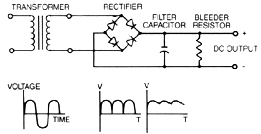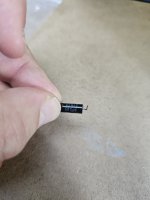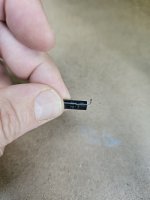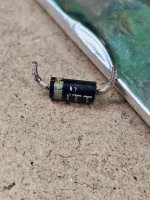falter
Veteran Member
Actually, once removed it tested OK. It appears to be C8 being shorted that presents the "short" at VR3. It's one of those bullet shaped ones. Dave I think said it shouldn't be a problem I think. After removing it it definitely is shorted... hmm.COMM would be short for COMMon in my mind, so I'd expect it to be ground. On a 7805 the pinout is usually I-C-O, for input-common-output, for instance.
If you can, I'd lift the input leg of the µA78G (datasheet, for everyone else) out of circuit and check continuity again, to see if the short goes away.
Last edited:




